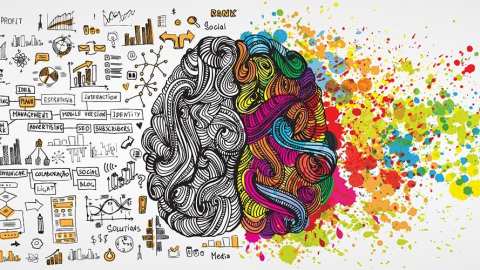Emotional agility in the 21st century workplace

In an increasingly global professional and social environment, organizations are becoming increasingly agile and adaptive to these changes. Regardless of industry, leaders share common concerns over changes in technology, an increasingly unpredictable global landscape, and other unpredictable issues of complexity.
The question is, “what can be done to counter these concerns?” According to renowned Harvard psychologist and a Big Think expert Susan David, who co-founded the Institute of Coaching at McLean Hospital, the answer lies in organizations and their employees understanding and embracing the concept of emotional agility.
What is Emotional Agility?
Emotional Agility is the process through which we as human beings can navigate life’s changes with a clear head, acceptance, and an open mind. It’s about figuring out our internal issues and dialogue in a way that enables us to still be successful; how we deal with the thoughts, emotions, stresses and various challenges we face every day.
In her book “Emotional Agility: Get Unstuck, Embrace Change, and Thrive in Work and Life,” David outlines the process of becoming emotionally agile in four movements:
- Showing Up. Face your thoughts, emotions, and behaviors — whether positive or negative — with an open mindset.
- Stepping Out. Adopt a form of detached observation to set aside your own emotions and thoughts to figure out ways to react most appropriately.
- Walking Your Why. Figure out and focus on your goals or core values, which can serve as your guiding compass.
- Moving On. Make small but deliberate changes to your mindset, habits, and motivations that incorporate your values.
When it comes to organizations, these principles of emotional agility can be applied to reduce errors, alleviate stress, and to increase innovation and enhance employee performance.
In the aforementioned book, David demonstrates how emotionally agile people are able to gain a deep understanding of themselves and how they respond to situations, and then use their insights to adapt and put their best foot forward despite virtually any challenges or setbacks. It provides a modern take on the concept of emotional intelligence and how people think about or respond to emotions.
As David said in her “The Tyranny of Positivity: A Harvard Psychologist Details Our Unhealthy Obsession with Happiness” video on Big Think, difficult experiences are part of being alive and that it’s important to deal with them authentically.
“It is really important that as human beings we develop our capacity to deal with our thoughts and emotions in a way that is not a struggle; in a way that embraces them and is with them and is able to learn from them.”
Changes and emotions create complexities for people and the organizations for which they work. So how do complex issues impact the success of an organization?
How Complexity Influences Organizational Agility
Complexity and change are inevitable in any organization. Ongoing organizational changes can hamper the very innovation and collaboration leaders seek to achieve with their employees. David says that it is impossible to cultivate an agile environment within organizations without first having agile people.
In an interview for the Harvard Business Review, David describes the workplace as:
“[…] the stage on which all of the patterns and stories that we’ve developed throughout our lives, really, come to the fore. The workplace is a stage of collaboration or competition. It’s, am I good enough, am I meeting my own expectations, am I meeting other people’s expectations, am I doing what I really want to be doing here?”
Overly complex and unclear organizational practices leads to particular cognitive styles and ways that people respond to situations. Some of these resulting work approaches include:
- Very linear, black-and-white approaches to thinking;
- Rapid or rushed decision-making processes; and
- Focused choices that don’t include teams or other interested stakeholders.
According to David, complexity within an organization can end up evoking negative responses from employees. Complexity can lead to increasing levels of stress, fear, or even guilt. And, considering that depression is anticipated to be the leading cause of disability globally by 2030, this is a cause for concern that many leaders may not be prepared to deal with in their organizations.
These types of responses lead to what David refers to as the Complexity Paradox.
The Complexity Paradox
The complexity employees are being asked to respond to in positive, thoughtful ways often evokes opposite responses in the cognitive systems of employees who do not encompass emotional agility. Rather than being inclusive, for example, people tend to become more exclusive. In lieu of collaboration, people instead shut down.
These seemingly negative responses are actually natural responses; it’s human nature to withdraw from uncomfortable situations because the mind perceives them as a form of danger.
However, without employees who can successfully exercise the internal skill of emotional agility, organizations won’t be able to achieve the agility they want or need in complex or stressful times.
How well do your employees handle stressful situations and changes? Try a free demo of Big Think+ today to hear from our experts about best practices in developing emotional agility and intelligence, as well as other issues that impact employee success.




